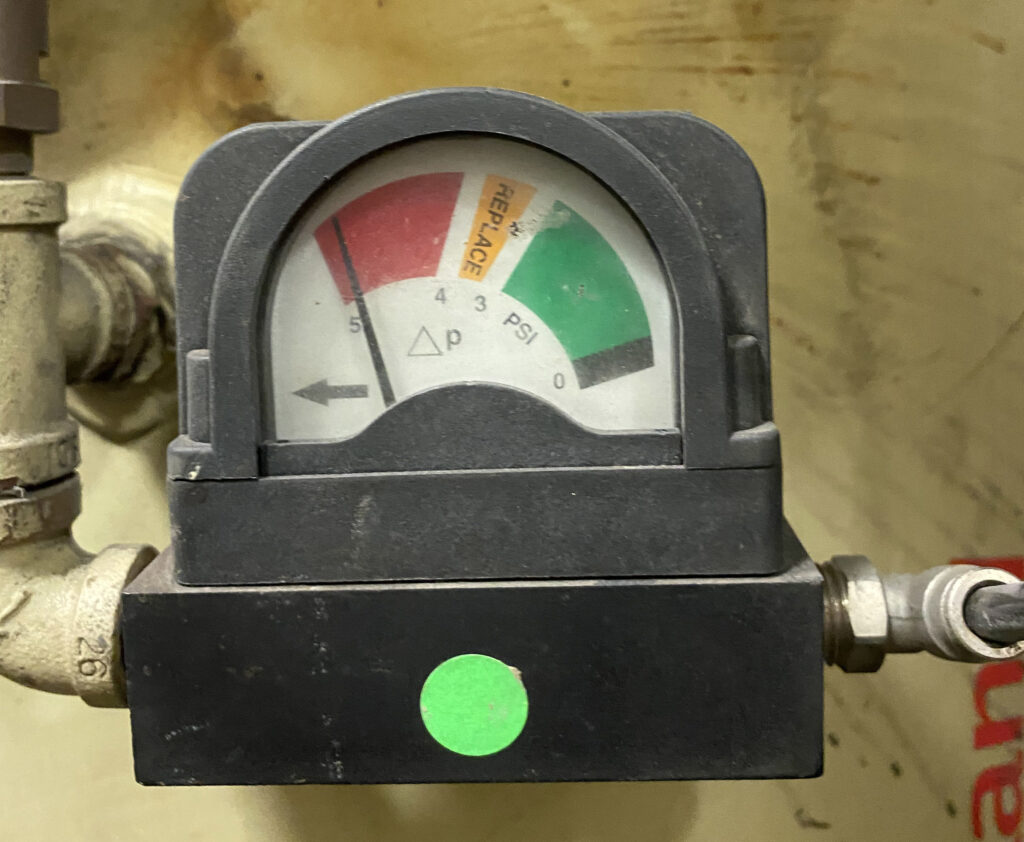
Air filters very often have differential gauges installed on them to help compressed air system operators detect when the element needs changing. It is very important for maintenance personnel to change the element when it is required.
Having high pressure differential causes the air compressor energy input to increase by about 1% every 2 psi of pressure — so not changing filters can be costly. The pressure differential can also cause problems with compressor control, with compressors rapidly cycling themselves to death, and sometimes causing high oil carryover and higher energy consumption.
High pressure differential is a sign the filter is reaching the end of life. If ignored, the pressure loss can actually go away as the internal element collapses; when this happens, contaminants can pass directly downstream, causing quality problem with the product.
It is important to realize the pressure gauge reading varies with the square of the pressure change. This means that if a filter is rated for 200 cfm, but is only passing 100 cfm, the gauge will read about one-quarter of its normal value. This increases the chance a filter that needs to be changed may go unnoticed by maintenance staff.
And of course, there are some gauges that are sealed within the filter housing, which means there is no method of testing them. With these products, sometimes the needle will stick or actually fall off the rails like the one in the graphic.
It is best to use the gauge only as a guide, but also change the filter at least once per year, even if the pressure reading shows that things are good.
Filed Under: Air Preparation & Regulation, Engineering Basics, Pneumatic Tips, Sensors & Gauges